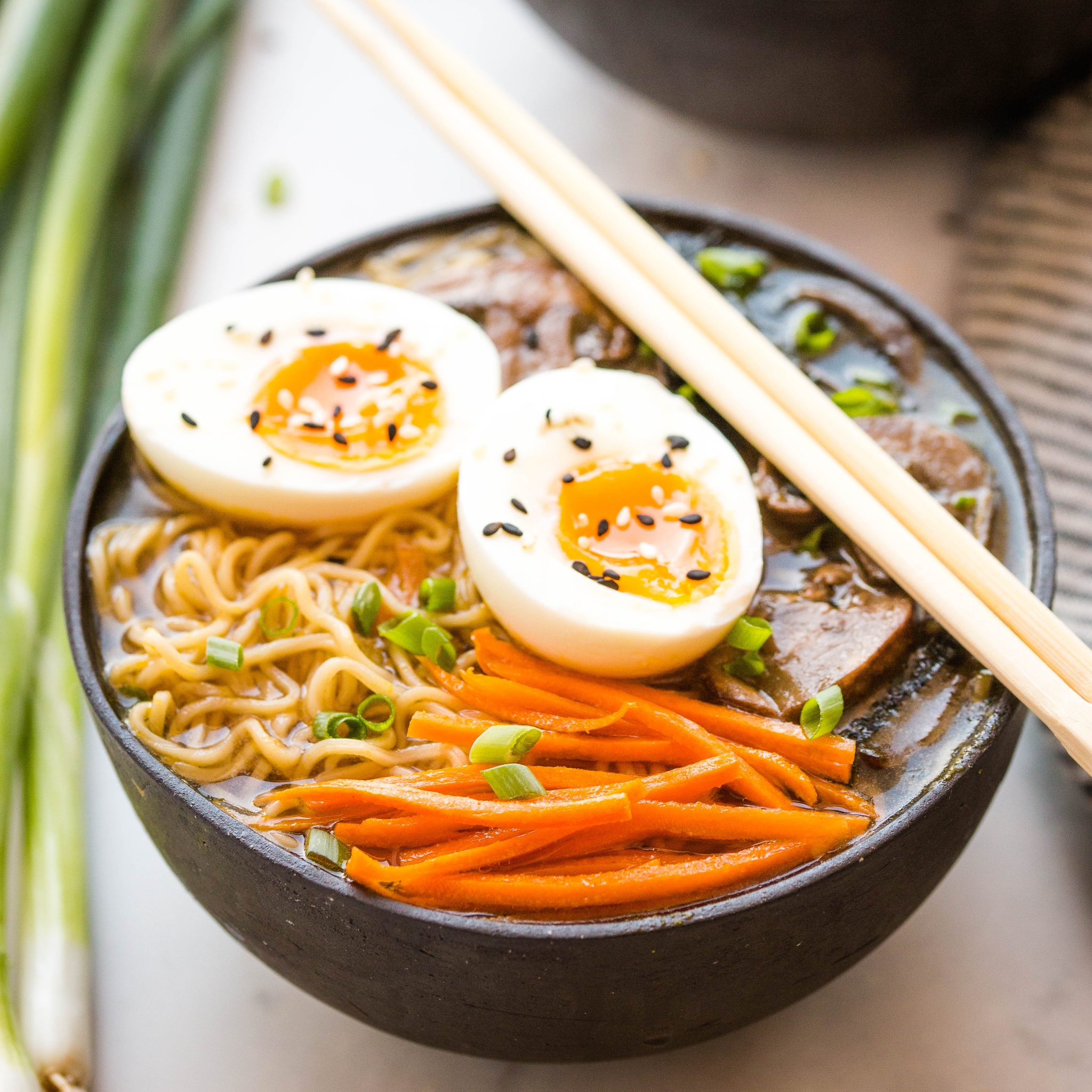Table Of Content

Plus, it recently introduced two brand-new ramen dishes, the vegan shoyu ramen and the spicy kimchi ramen and revamped a go-to on the regular menu, lemon pepper chicken ramen. We hope this Japanese ramen guide has stirred your curiosity and your senses! Share with us your favorite style of ramen and local ramen shops in the comment box below. So, to be technically correct, we consider both tonkotsu ramen and tori paitan by soup categories instead of grouping them as the tare flavors. Fresh blanched veggies such as baby bok choy or spinach work well too.
Noodles and broth only$9.00
It is often regarded as the fourth type of ramen outside of Japan. However, it’s important to note that tonkotsu (meaning “pork bone”) is a soup broth and not a flavor. And though they offer an interesting khao soi-inspired ramen, the tonkotsu ramen here happens to be the highlight. The broth is extremely rich, cloudy, and borderline too flavorful—like a tight squeeze from a pro wrestler rather than a warm hug. Every spoonful hits with a piledriver of flavor, and we suggest ordering your bowl spicy to balance out the heavy pork broth (maybe it’s the Thai influence, but they don't play around with spice here).
Take-Out and Delivery Options
Come and explore the world of Japanese flavors at Ramen House, where every dish tells a story of tradition and taste. Seasoned with Japanese soy sauce, shoyu ramen tastes slightly more complex than shio. The broth could partake a clear brown color that’s light on the tongue or a dark cloudy color that’s dense and rich, depending on what is additionally swirled into the broth. This Orange County ramen shop recently expanded to Gardena, with a stall inside the Tokyo Central Market serving tsukemen and ramen. While the disposable bowls are an unfortunate aspect of this casual outlet, the specialty of miso-based broth — either tamer white miso or more aggressive red miso — brings a rounded sweetness and deep umami flavor.
Ultimate Travel Guide to Tokyo 東京
Shoyu ramen— also called Tokyo Ramen —is the original Tokyo-style classic that reminds many of mom’s homemade ramen or that nondescript ramen shop from childhood. The combination of ingredients sometimes defines a unique style of ramen, and there is no-frills ramen that doesn’t come with toppings. In this post, we’ve gathered all the popular authentic ramen recipes that Nami has shared on Just One Cookbook.
Seaweed Salad
Decorated in a traditional Japanese style, with wood accents and paper lanterns, it exudes an authentic atmosphere. Here, you’ll find a few tables accommodating four people each, along with a large communal table at its heart, perfect for gathering with friends and fellow diners. For those seeking a different vibe, there’s also a bar area with high-top tables and chairs.
Mazesoba (or Mazemen) is a brothless ramen that originated in Nagoya. It is composed of thick chewy noodles, ground pork mixture, and a variety of toppings such as green onions, garlic chives, minced garlic, and egg yolk. This dry-style noodle doesn’t come with any broth, so the flavors rely heavily on the savory pork mixture and toppings.
Hiyashi Chuka with Sesame Dressing
New ramen restaurant, market eatery opening in Coralville’s Iowa River Landing - The Gazette
New ramen restaurant, market eatery opening in Coralville’s Iowa River Landing.
Posted: Wed, 01 Nov 2023 07:00:00 GMT [source]
Expect ramen-tasting menus full of A5 Wagyu and crispy karaage. In most Japanese restaurants, Ramen noodles are served and consumed at the restaurant. From the beginning, The House of Ramen offers a customer take-out option. We are introducing the freedom to enjoy the Ramen eating experience the way you like it! Killer Noodle is the newest spot from the people behind Tsujita, and they specialize in tantanmen - super spicy ramen noodles. TOKYO (AP) — Ramen noodles are so popular they have become one reason to visit Japan.
Creamy Vegetarian
Pho and ramen are both offered; in addition to the noodle bowls for slurping, a good selection of snackable items including dumplings, egg rolls, and fried rice are on the menu. Opened in March 2022, this new ramen shop hopes to carve a niche for itself in the already-crowded Harvard Square ramen scene with its innovative and unconventional ramen inspired by an ocean town in Japan. It offers a great selection of bowls and izakaya-style small plates that “you have not seen anywhere,” proclaims owner Yasu Sasago. Not long ago, we started cooking “fake ramen” at home, and we’re dying to try the real deal. That’s why we’ll take a tour of our city to find a Japanese restaurant that serves ramen. We’re grateful for your intake of different types of ramen classified by their type of tare flavors.
Experience True Authentic Ramen
And thanks to our West Coast location, LA has become somewhat of a testing ground for every Japanese ramen spot looking to expand its footprint into the USA. So we don’t just have a whole bunch of ramen—we have some of the best ramen in the country. No part of this website or its content may be reproduced without the copyright owner's permission.

This focused ramen shop in Torrance serves polished bowls with a garlicky broth. Chashu pork melts in one’s mouth, while the noodles are of the thin, wheat variety common at Hakata-style shops. This Michelin-recommended ramen shop has a slightly more upscale and polished feel than competing shops, with some bowls reaching and surpassing $30.
Whether you’re a fan of rich, savory broths or prefer something with a hint of spice, the ramen options cater to every palate. Vegetarians can indulge in the specially curated vegetarian ramen, while meat lovers can relish the bulgogi beef and teriyaki chicken rice bowls. Build-your-own ramen is a concept that sounds pretty gimmicky, but Shin-Sen-Gumi works—the ramen is great and the operation is well run. By build-your-own, we don’t just mean you get to throw a few green onions on top. From the thickness of the noodles to the richness of the broth, you can customize your bowl to any degree you want here, and that’s the kind of power that keeps people lining up.

The sister spot to Mensho Tokyo heartily leans into to-go options and specializes in abura soba, a type of ramen without the broth (although it is served with oil — in Jikasei’s case, a shoyu tare sauce). If you’re looking for something a little bit different, try the spicy fried eggplant abura soba or the lamb abura soba option. Soy sauce paitan is the signature style at this Hayes Valley ramen restaurant, whose parent company owns more than 200 ramen shops in Japan.
It resulted in a cloudy, fatty broth full of collagen and fantastic flavor. Everyone loved it, which gave birth to one of the most renowned ramen in the world. Taking over the rank is tori paitan (鶏白湯), a thick and milky chicken-based soup broth.
Vegetarians and non-vegetarians alike adore the Vegetarian Ramen. The vegetable broth, brimming with flavors, is paired with fresh vegetables and expertly cooked noodles, delivering a dish that’s both wholesome and satisfying. I’m a little sad there’s no tonkotsu recipe on JOC, as this is my go-to website for authentic Japanese, but I loved learning about the different types of ramen that exist. Perhaps some time in the future you guys will have cooked up a delicious tonkotsu recipe for me to try.

No comments:
Post a Comment